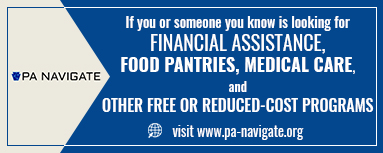BCHIP is a coalition of Bucks County hospitals, health service organizations, and the Bucks County Department of Health working in collaboration to overcome healthcare inequities in our county and improve overall health in our community.
The causes of inequity in healthcare are many and diverse. They include socioeconomic status, race, ethnicity, location, education, health insurance, social isolation, ethnic medical diversity, and community traditions. Institutional disparities also exist, such as location and availability of health services. These are also referred to as social determinants of health. With so many factors causing healthcare inequity, a multipronged approach is needed.
Awareness is the first step to overcoming this problem. Many doctors and medical professionals are unaware of the level of disparity in our community. And many members of the community who receive unequal medical care are unaware of their need for help or they are unwilling to seek out help. Both populations need to be educated so that disparity can be overcome.
Educating healthcare providers
Healthcare providers need to be aware of the data demonstrating disparity so that they are more likely to recognize and combat it. Subconscious and unintended stereotyping or bias can contribute to healthcare disparity, which providers need help to recognize and overcome.
Sometimes a patient may refuse necessary treatment. A medical provider should ask appropriate questions to determine the reason for the refusal, which could be due to a lack of healthcare insurance, a fear of losing time off from work, a poor understanding of the seriousness of the condition, or a general suspicion of medical care. With knowledge of the reasons, the provider can help the patient overcome these concerns.
Thorough intake questionnaires should include all known disparity risks and social determinants of health. Training in proper evaluation of these questionnaires will help healthcare providers notice red flags warning of increased risk of health disparity and take necessary steps to overcome them before serious illnesses develop, such as these sobering statistics:
- Stroke risk is 50% higher among individuals with three or more known disparity risks, even after adjusting for stroke risk factors
- The infant mortality rate for college-educated black women is higher than that of white women with similar education
- African American children are hospitalized for asthma at a rate 4-5 times greater than white children
In addition, the percentage of uninsured Americans varies by race:
- 36% Latinos
- 33% Native Americans
- 22% African Americans
- 17% Asian and Pacific Islanders
- 13% Whites
Uninsured adults are less likely to visit a doctor, less likely to have a private physician, and less likely to engage in necessary medical treatment.
Educating the public
It’s important to raise public awareness of these disparities, especially among the underserved. Education should include linguistically and culturally sensitive information; education in healthier lifestyle options; awareness of medical resources; and awareness of agencies and organizations that provide financial and other types of support for medical needs.
Developing outreach in partnership with community stakeholders will help us ensure that our message reaches the most vulnerable populations.
Providing more access to healthcare
The BCHIP partnership is looking at ways to make healthcare more easily accessible to underserved communities by providing more clinic access and more medical practitioners in their areas. Increasing the number of minority medical providers is also an important part of the outreach strategy. Convenient access to both physical and mental health services is being evaluated to ensure that no one in Bucks County is without the help he or she needs.






